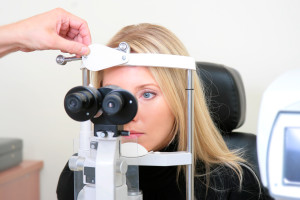Posted by: Georgia Eye Physicians and Surgeons in Latest News
As summer starts to draw to a close many parents find themselves knee deep in a flood of back to school activities. But even though schedules may grow increasingly hectic, it is important to make sure that one vital responsibility not be overlooked: the back to school eye exam. Most school districts around the country require vision screening for children in public school on an annual or semi-annual basis, however these regular check-ups are more than just a bureaucratic inconvenience. Undergoing annual comprehensive eye examinations can detect eye and vision problems early and help prevent those problems from impacting your child’s development down the line.

But regular eye exams can do more than catch potential problems; they can help improve your child’s academic performance as well. A child who is unable to see print in a book or clearly view the board at the front of the classroom can become easily frustrated, leading to poor academic performance. According to the American Optometric Association’s (AOA) 2009 American Eye-Q® survey, 60 percent of children identified as “problem learners” actually suffer from undetected vision problems and in some cases have been inaccurately diagnosed with attention deficit disorder (ADD) or attention deficit hyperactivity disorder (ADHD). Finally, as technology places an increasing emphasis on smartphones, tablets, and computer screens as educational tools, more school age children are suffering from computer vision syndrome, a temporary condition that can cause visual discomfort and interfere with the ability to focus and learn. Catching vison difficulties early can go a long way towards optimizing school performance.
In 2014, pediatric vision care was included as one of the Affordable Care Act’s Essential Health Benefits, meaning that now millions of children can gain direct access to local optometrists for comprehensive eye exams and treatment, including medical eye care, through health insurance. Please contact Georgia Eye Physicians and Surgeons if you would like to schedule an eye exam, or are interested in any of the services we provide. Be sure to follow us on Facebook, Twitter, and Google+ for more tips for healthy eyes.

